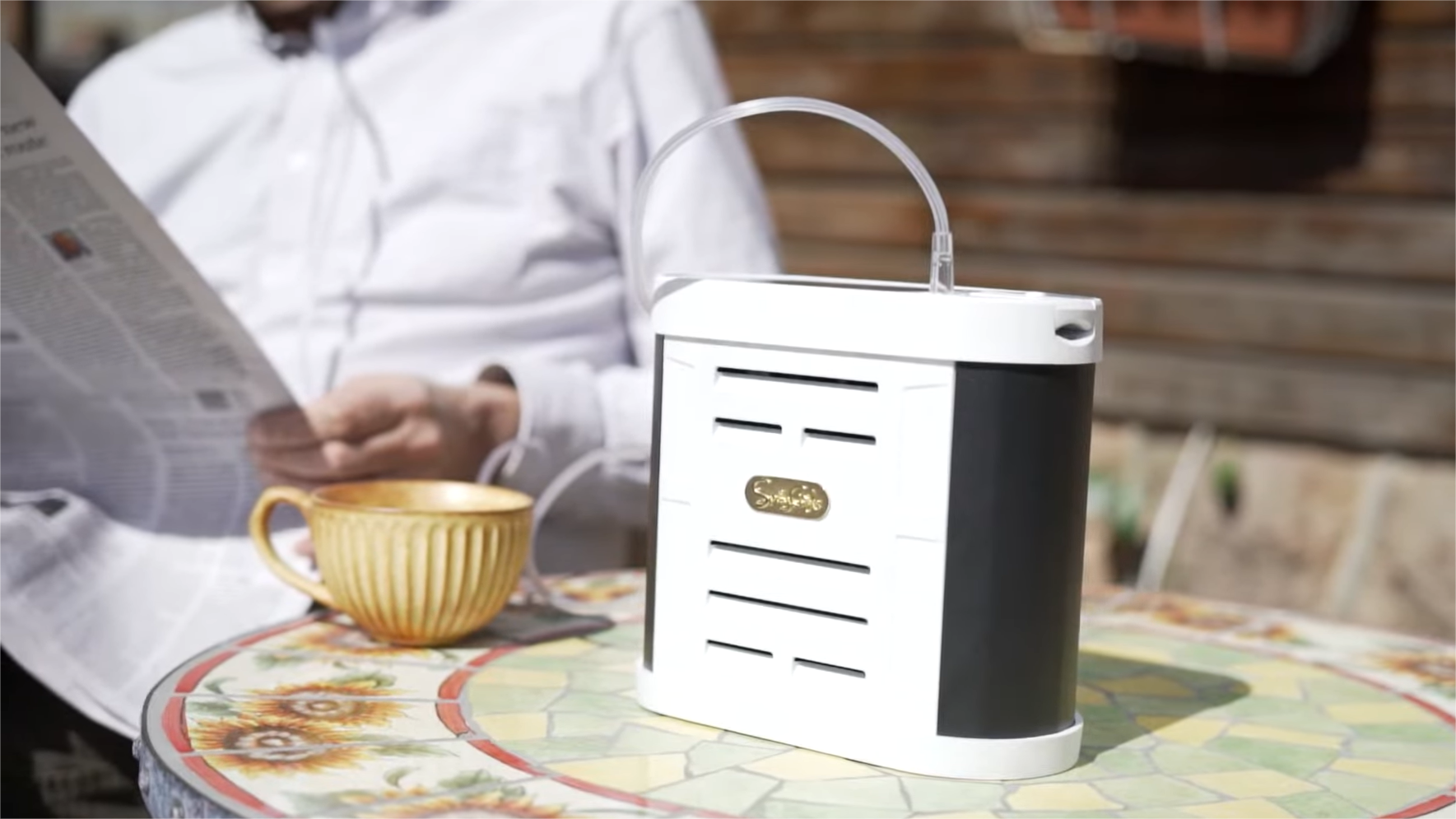Quick Answer
No, you shouldn't use an oxygen concentrator in a room with all the windows and doors closed. To use it safely, you need to let fresh air in by opening a window. This stops too much oxygen from building up, which can be dangerous. Make sure there's a clear way to get out quickly in case of emergency, and keep your concentrator in good shape with regular cleaning. If you keep the room aired out and follow these tips, you can use your oxygen machine without worry.
Introduction
Using an oxygen concentrator at home is vital for those with specific medical needs, but the idea of operating it in a closed room can raise safety concerns. This article will provide straightforward advice on how to use these important devices safely and effectively. By explaining the essentials of proper ventilation, outlining the steps for regular maintenance, and answering common questions, we aim to help you confidently navigate the complexities of oxygen therapy. Whether you're a first-time user or looking to ensure you're following best practices, our guidance will support you in taking care of your health in the safest way possible.
Why Is Ventilation Important for Safe Oxygen Use at Home?
Your body needs a steady supply of oxygen to work properly, just like a car needs fuel to run. When you're using an oxygen concentrator, it's like having a little oxygen factory in your room - but even factories need good airflow. Let's break down why fresh air is key when you're using one of these devices.
Why Fresh Air Matters
When you're in a car on a hot day with the windows closed, the air can become uncomfortable and stuffy. This situation is similar to using an oxygen concentrator in a room without good airflow. You need fresh air circulating to maintain balanced oxygen levels, ensuring that the environment isn't overwhelmed with oxygen or depleted of it. Opening a window in a room, much like in a car, helps regulate the air quality to keep it comfortable and safe.
Keeping Oxygen Levels Safe
Your oxygen concentrator pulls in room air, ups the oxygen, and takes away most of the nitrogen. This means you're breathing in more oxygen than normal. Now, too much of anything isn't good, and that includes oxygen. In a closed room, if you have too much oxygen and not enough regular air, it can be as troublesome as not having enough oxygen at all. Plus, high oxygen levels can be a fire risk - and nobody wants that.
Staying on the Safe Side
The trick is to keep the air moving. A well-ventilated room has a mix of fresh air coming in and stale air going out, which keeps everything in balance. Simple things like keeping a door ajar or having a vent open can make a big difference. And if you can, using a fan to gently circulate the air is like giving your room a breath of fresh air.

How to Use Your Oxygen Concentrator Safely in a Closed Room
- Ensure Adequate Ventilation: Open a window or door slightly to allow fresh air to enter the room and prevent oxygen from building up to unsafe levels.
- Position Correctly: Place your concentrator at least a few feet away from walls, curtains, and furniture to allow for proper air circulation around the machine.
- Follow Manufacturer Instructions: Read and adhere to the guidelines provided in the user manual of your oxygen concentrator for safe operation.
- Avoid Flammable Materials: Keep the concentrator away from flammable products, heaters, stoves, and any open flames to reduce the risk of fire.
- Install Smoke Alarms: Equip the room with working smoke detectors and check them regularly to ensure they are functioning correctly.
- Check Electrical Outlets:Use a properly grounded electrical outlet and avoid using extension cords or power strips, which can overload and become fire hazards.
- Use Oxygen Monitors: Consider installing an oxygen monitor in the room to alert you if oxygen levels get too high.
- Regular Maintenance: Clean and replace filters as recommended by the manufacturer to keep the concentrator working efficiently.
- Emergency Plan: Have a clear plan for what to do in case of an emergency, including how to turn off the machine and exit the room quickly if needed.
- Consult Healthcare Providers: Speak with your doctor or oxygen provider to get personalized advice on using your concentrator in the specific spaces you occupy.
What Are the Pros and Cons of Using Oxygen Concentrators in Closed Rooms?
Pros:
- Accessibility: Having an oxygen concentrator indoors means you can access oxygen therapy without leaving the comfort of your home.
- Independence: Concentrators provide a degree of autonomy, allowing you to move freely around your room without being tethered to a stationary tank.
- Cost-Effectiveness: Over time, using a concentrator may be less expensive than regularly refilling oxygen tanks.
- Energy-Efficiency: Modern oxygen concentrators are designed to use electricity efficiently, reducing operational costs.
Cons:
- Risk of Excess Oxygen: Without proper ventilation, oxygen can build up to excessive levels, which may pose a risk of fire or health issues.
- Ventilation is Key: In closed rooms, the lack of fresh air circulation requires you to actively manage ventilation to avoid the buildup of concentrated oxygen.
When using an oxygen concentrator in a closed room, it's important to weigh these factors to maintain a safe and effective oxygen therapy regimen. Always consult with healthcare professionals to tailor these considerations to your personal medical needs and living situation.
How to Ventilate a Room When Using an Oxygen Concentrator
Ensuring your room has the right airflow can make a huge difference when using an oxygen concentrator. Below are some practical ways to keep the air fresh and safe in your space.
Letting the Air In
Good ventilation is like giving your room a set of lungs; it needs to breathe in fresh air and exhale the stale stuff. You don't need fancy equipment for this:
- Openings: Crack open a window or door – even just a bit helps.
- Fans: A simple fan can circulate air, keeping it from getting stagnant.
- Air Conditioners: If you have one, use the vent setting to bring in outside air.

Monitoring Matters
Keep track of the oxygen levels in your room like you would check the temperature on a thermostat:
- Oxygen Monitors: These handy devices can alert you if oxygen levels get too high.
- Regular Checks: Make it a habit to peek at the monitor regularly, ensuring everything's in the green zone.
Emergency Readiness
Just like having a smoke detector in your house, being prepared for any issues with your oxygen machine is key:
- Clear Pathways: Keep your exits free of clutter. If you need to leave quickly, you'll be glad you did.
- Know Your ABCs: Always Be Charging (ABC) your phone or a battery pack so you can call for help if needed.
Final Thoughts
It's important to remember that your oxygen concentrator is a crucial tool in maintaining your health and enhancing your quality of life, so using it safely is paramount. Always ensure good ventilation to balance oxygen levels, keep up with regular maintenance to ensure your machine functions effectively, and become familiar with its features and alerts for peace of mind. By making informed choices, staying up to date on the latest information, and seeking advice when needed, you're well-equipped to navigate oxygen therapy confidently. With these strategies in place, you can continue your daily activities, secure in the knowledge that you're taking proactive steps to take care of yourself and use your oxygen concentrator to its fullest potential.





Leave a comment
This site is protected by hCaptcha and the hCaptcha Privacy Policy and Terms of Service apply.